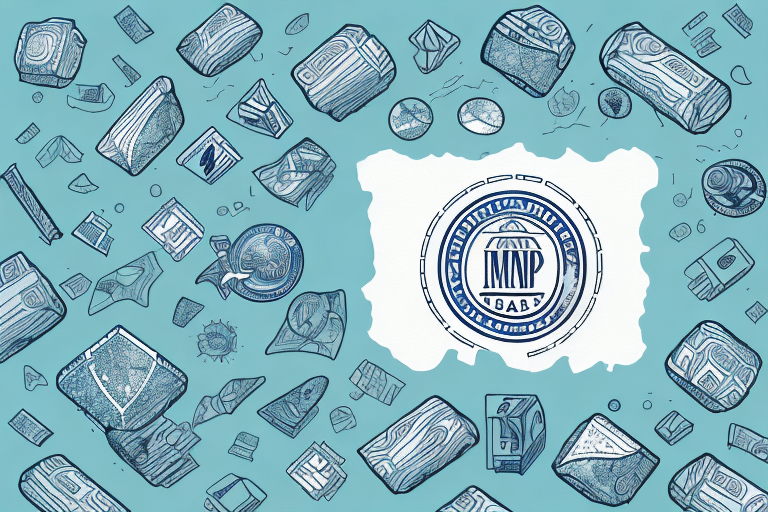What Does Postal Insurance Cover? A Comprehensive Guide
Sending and receiving packages and parcels has become an integral part of our daily lives in the modern world. With the rise of e-commerce and online shopping, we're constantly sending or receiving something or the other. But what if your package gets damaged or lost in transit? That's where postal insurance comes in. In this article, we'll discuss everything you need to know about postal insurance, its benefits, and how it can protect your packages.
Understanding the Basics of Postal Insurance
Postal insurance is a service that provides coverage for packages or parcels sent through postal services or couriers. It is designed to protect the sender and receiver from loss, damage, or theft of the package during transit. With postal insurance, the sender can claim compensation for the value of the item sent if it is lost or damaged in transit.
Eligibility and Exclusions
Not all items are eligible for postal insurance. Items prohibited by law, such as illegal drugs or weapons, cannot be insured. Additionally, certain items may require additional documentation or specialized packaging to qualify for insurance. Always verify with your postal service or courier to ensure your package meets the necessary criteria before sending.
Benefits of Choosing Postal Insurance
Opting for postal insurance offers several advantages that can provide both peace of mind and financial protection.
Peace of Mind
Knowing that your package is insured allows you to send valuable or fragile items without constant worry about potential loss or damage. This assurance is particularly valuable for high-stakes shipments, such as electronics, jewelry, or artwork.
Financial Protection
In the event of loss or damage, postal insurance ensures that you are compensated for the value of your items. This can prevent significant financial setbacks, especially when shipping high-value goods. According to the U.S. Postal Service Office of Inspector General report, insured packages have a higher recovery rate, reducing the financial impact on senders.
Expedited Claims Process
Insured packages typically benefit from a faster claims process. When a claim is filed, postal services prioritize these cases, leading to quicker resolutions and compensation. This efficiency can be crucial for businesses that rely on timely deliveries.
Who Needs Postal Insurance?
Postal insurance is beneficial for a wide range of individuals and organizations. Understanding who can benefit most helps in making informed shipping decisions.
Individuals
Individuals sending valuable or sentimental items, such as jewelry, electronics, or personal keepsakes, should consider postal insurance to protect against unforeseen circumstances.
Businesses
Businesses that frequently ship products, especially high-value or fragile items, can safeguard their inventory and maintain customer satisfaction by utilizing postal insurance.
International Shippers
Shipping internationally introduces additional risks, including customs inspections and multiple handling points. Postal insurance provides an extra layer of security for international shipments, mitigating the risks associated with cross-border logistics.
Types of Postal Insurance Available
There are various types of postal insurance plans available, each catering to different needs based on the value and nature of the items being shipped.
Declared Value Coverage
With declared value coverage, you declare the monetary value of your package, and the insurance premium is based on this declared amount. This option is ideal for items that exceed standard insurance limits provided by the postal service.
Priority Mail Express Insurance
This type of insurance is available for Priority Mail Express shipments and typically provides coverage up to $100. It's a suitable option for expedited shipments requiring quick delivery and added security.
Additional Insurance Options
Some postal services offer specialized insurance plans for specific types of shipments, such as international insurance or high-value item coverage. It's important to explore these options to find the best fit for your shipping needs.
How to Purchase Postal Insurance
Postal insurance can usually be purchased at the time of sending your package. Here's how you can secure insurance for your shipment:
- Declare the Value: Determine and declare the accurate value of your package.
- Choose a Coverage Type: Select the appropriate insurance plan based on your needs.
- Pay the Premium: Pay the insurance premium either at the post office or through the courier's online platform.
Many courier services, including USPS, offer online options for purchasing insurance, providing a convenient and efficient way to secure coverage before sending your package.
Factors Affecting Postal Insurance Coverage
Several factors influence the extent of coverage and the cost of postal insurance. Understanding these factors can help you make informed decisions when selecting an insurance plan.
Declared Value
The declared value of your package directly impacts the insurance premium. Higher declared values generally result in higher premiums, but they offer greater financial protection.
Item Type
The nature of the item being shipped affects coverage. Fragile or high-value items may require specialized insurance plans to ensure adequate protection.
Packaging
Proper packaging is crucial. Well-packaged items are less likely to incur damage, and some insurance plans may have specific packaging requirements to qualify for coverage.
Timing
When you purchase insurance also matters. Some postal services require insurance to be purchased at the time of shipment, and there may be deadlines for declaring the value or insuring the package.
Claims Process for Postal Insurance
Filing a claim for lost or damaged items involves several steps. A clear understanding of the process can expedite resolution and compensation.
Required Documentation
To file a claim, you typically need to provide proof of purchase, evidence of damage or loss (such as photographs), and the original shipping label. Each courier may have specific requirements, so it's essential to follow their guidelines meticulously.
Filing Timelines
There are often strict time limits for filing claims. For example, USPS requires claims for Priority Mail to be filed within 60 days of the mailing date. Always check the specific timelines with your courier service to ensure eligibility.
Claim Resolution
Once a claim is filed, the postal service will investigate the matter. If approved, compensation is typically processed within a specified timeframe, which can vary depending on the courier and the nature of the claim.
Common Misconceptions About Postal Insurance Coverage
There are several misconceptions surrounding postal insurance that can lead to misunderstandings about its necessity and coverage.
Courier Services Assume Full Responsibility
Many people believe that courier services automatically cover all losses and damages. In reality, there are limitations to their liability, and without insurance, you may not be fully compensated for your losses.
Insurance is Only for Expensive Items
Another common misconception is that insurance is only necessary for high-value items. However, even seemingly insignificant packages can get lost or damaged, making insurance a valuable protection for all shipments.
Tips for Maximizing Your Postal Insurance Coverage
To get the most out of postal insurance, consider the following tips:
- Accurate Value Declaration: Ensure that the declared value accurately reflects the worth of the items being shipped to avoid complications during claims.
- Choose Reliable Couriers: Opt for courier services with strong track records in handling and delivering packages safely.
- Proper Packaging: Use high-quality packaging materials and secure wrapping to minimize the risk of damage during transit.
- Maintain Detailed Records: Keep thorough records of your shipments, including photographs of the items, receipts, and communication with the courier service. These records are invaluable when filing a claim.
- Understand Coverage Limitations: Familiarize yourself with what is and isn't covered by your insurance policy to ensure that your needs are fully met.
By following these guidelines, you can enhance the effectiveness of your postal insurance and ensure the safety and security of your packages during transit.
Conclusion
Postal insurance is an essential service for anyone looking to secure their packages against loss, damage, or theft during transit. Whether you're an individual sending a precious gift or a business shipping valuable goods, understanding the basics of postal insurance, its benefits, and how to effectively utilize it can provide significant peace of mind and financial protection. Always ensure to choose the right type of insurance, declare the accurate value of your items, and follow proper packaging practices to maximize your coverage.






















